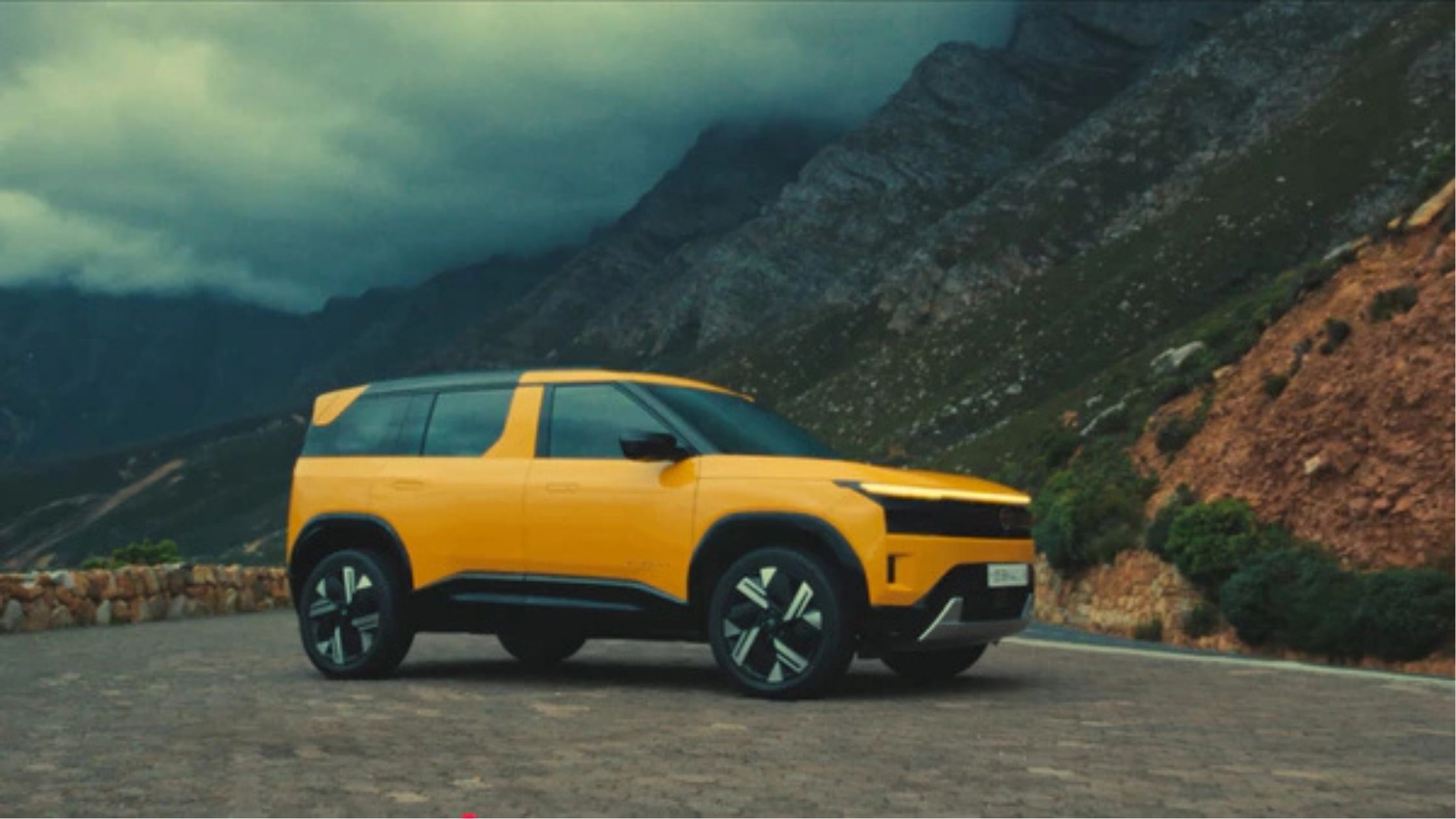
- Jasleen Kaur
- 11/11/2025
The all-new Tata Sierra is poised to make a grand comeback on 25 November 2025 and this time, blending nostalgic charm with modern innovation.
When the Sierra first appeared back in the early 1990s, it carved out a special place in Indian motoring: rugged, bold, and unmistakable. Fast-forward to today, and its revival signals more than just a nameplate return; it’s a statement of intent from Tata Motors: to honour heritage while embracing the future. In this blog post, let’s explore what makes the new Sierra special from design and tech to the promise of powertrains and strategy.
Nostalgia Meets Modernity
For those who cherished the original Sierra, the new version carries forward some DNA: upright stance, meaningful road presence, and a name that still evokes memories. But Tata has carefully re-imagined it for a new era. The front fascia features a sleek full-width LED light bar, slim headlamps, and a bold “SIERRA” badge prominent above the grille. The roof and C-pillar contrast is another visual nod, while the five-door layout replaces the original’s three-door configuration making the modern Sierra far more usable for families and urban buyers.
On the inside, the cabin steps firmly into the 21st century. A three-screen layout one for the instrument cluster, one a large central infotainment display, and one facing the front passenger gives the cabin a “cockpit for all” feel. Materials appear premium, surfaces are clean, and the overall feel is more lounge than workhorse. The blend of heritage and modern design is palpable, a refreshing mix of emotion and logic.
Tech, Features, and How It’s Built
Beyond the aesthetics, the new Sierra brings technology to the fore. It’s expected to offer a rich suite of features: panoramic sunroof, wireless connectivity (Android Auto / Apple CarPlay), ventilated seats, ambient lighting, and more. On the safety front, one can anticipate multiple airbags, a 360° camera, tyre-pressure monitoring and even Level-2 driver-assistance systems.
Under the skin, Tata appears to leverage its existing platforms for strength and efficiency. Reports suggest the ICE version will build on familiar mechanicals, while an EV version is also in the works signalling Tata’s dual strategy of catering both traditional and electric-minded buyers.
One interesting angle: to keep costs competitive, some variants are expected to use a naturally-aspirated petrol engine (lower on complexity, lighter on cost) alongside stronger turbo-petrol and diesel options. The brand’s aim seems clear offer a premium feel without ultra-premium pricing.
What to Expect: Pricing, Powertrain & Launch Strategy
Mark your calendars for 25 November 2025: the day the Sierra makes its official return. Tata has confirmed the date. And although exact pricing is yet to be announced, industry chatter suggests a fairly aggressive bracket possibly somewhere between ~₹11 lakh to ~₹20 lakh for the ICE variants, with the EV version positioned higher.
On the powertrain front, anticipation is high. The new Sierra could offer:
- A 1.5 litre naturally-aspirated petrol (cost-effective, simpler)
- A 1.5 litre turbo-petrol (more performance)
- A 2.0 litre diesel drawn from the Harrier/Safari lineage in higher-end trims.
- An all-electric version with a dedicated front-end design, closed-off grille, and perhaps a range of ~500 km (for the EV) according to some teasers.
This strategy allows Tata to appeal to multiple buyer groups: traditional ICE buyers, cost-conscious users, and forward-looking EV shoppers.
Why This Matters — Beyond the Car
Reviving the Sierra isn’t just about another SUV in a crowded Indian market; it’s about brand storytelling, market positioning and future roadmap. For Tata, the Sierra serves as:
- A bridge between nostalgia and modern mobility: appealing to those who remember the original, while attracting new buyers seeking freshness.
- A platform for both ICE and EV technologies: signalling that Tata isn’t choosing one path, but embracing multiple as the market evolves.
- A statement of value: by promising premium design and features at aggressive pricing, Tata aims to disrupt the segment and grab mind-share.
Final Thoughts
The new Tata Sierra arrives at a fortuitous time: Indian car buyers are hungry for premium experiences, yes, but also value-conscious. They want design, tech and usability without necessarily paying luxury brand prices. The Sierra seems tuned to that mindset.
If all goes as teasers suggest, by the time it officially launches on 25 November, we could be looking at one of the most compelling SUVs of 2025 not just for what it is, but for the smart way it navigates the present and future of mobility in India.
As the countdown begins, one thing is clear: the Sierra name carries weight, and if Tata plays this revival well, it might not just be a comeback, it could set a new benchmark.
